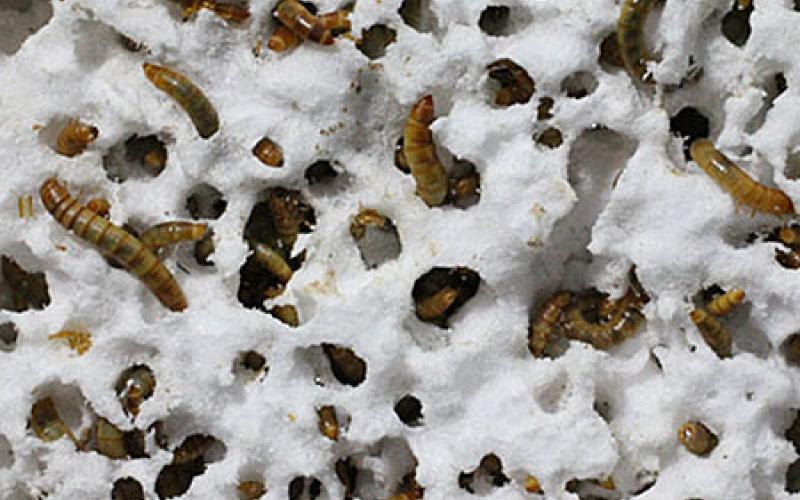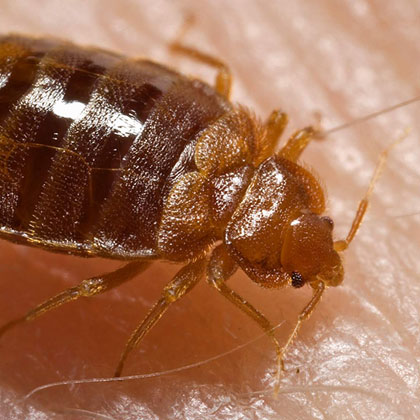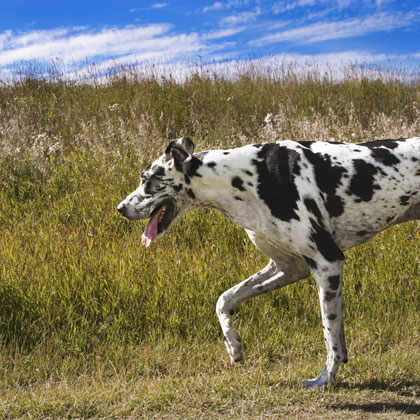Mealworms and their plastics-eating ‘super power’

Mealworms and their plastics-eating 'super power'
In a recent study, Chinese scientists show how some insects' larvae might represent a viable option for managing persistent plastics waste.
Original Paper:
Yu Yang, Jun Yang, Wei-Min Wu, Jiao Zhao, Yiling Song, Longcheng Gao, Ruifu Yang, and Lei Jiang. "Biodegradation and Mineralization of Polystyrene by Plastic-Eating Mealworms: Part 2. Role of Gut Microorganisms." Environmental Science and Technology. 49 (2015): 12087−12093. DOI: http://dx.doi.org/10.1021/acs.est.5b02663
The production and consumption of petroleum-based products presents major sustainability concerns for several environmental-related reasons, from resource depletion to waste generation. In 2013, the global production of plastics derived from petroleum increased to 299 million tons, 200 times more than in 1950. Modern societies rely tremendously on the use of plastics. In particular, a plastic known as Polystyrene (PS) is used to manufacture Styrofoam, which has many applications. PS deserves special attention since it is not considered to be biodegradable due to its high molecular weight and stable structure.
In a recent study published in the journal Environmental Science and Technology, a group led by Jun Yangfrom Beihang University in China, along withWei-min Wu from Stanford University, demonstrate the ability of mealworms to digest Styrofoam. In the first part of the study, they report how the mealworm (Tenebrio molitor) is able to chew and eat Styrofoam. Analyzing the eliminated material, the scientists demonstrated the formation of small molecules components that occur in the gut of the larvae. Through carbonmass balancetests, they found that almost 50 percent of the PS ingested was converted to carbon dioxide. It became clear that a variety of microorganisms present in the mealworms' gut play a crucial role in digesting non-biodegradable food.
In the second part of the study, the authors identify the microorganisms through experiments that use antibioticsfor the suppression of the PS digestion in the mealworms, andisolate the bacterial strains in the mealworms' gut responsible for this function. The results showed three of the six antibiotics tested — ampicillin, erythromycin, and gentamicin — were able to inhibit the growth of gut bacteria. Gentamicin was the best option. Having decided the antibiotic to carry on suppression tests, the researchers then managed to isolate the bacterial strain. The results indicated the Exiguobacterium sp. strain YT2 as capable of causing cleavage in the structure of PS in lighter weight fragments.
The study was the first to report the presence of PS-degrading bacteria in the guts of mealworms. It demonstrated not only the bacterial growth on the PS film, with changes on the surface form of the film, but also provides evidence of the production of lightweight compounds.
The authors believe PS degradation in mealworm guts could be similar to microbial degradation of plant cells in ruminating mammals and wood in termites, which represents a beneficial relation between microorganisms and their hosts. The mealworms' gut can be considered as an efficient bioreactor. More importantly, the study might have revealed a new approach to waste management, including the potential for industries to explore the option of using mealworms to treat plastic wastes. Even though the amount of plastic wastes produced every day around the world is mountainous compared to the tiny mealworms, further research and development may potentially unlock the "super power" of these wiggly creatures to tackle their giant new, man-made food source.




